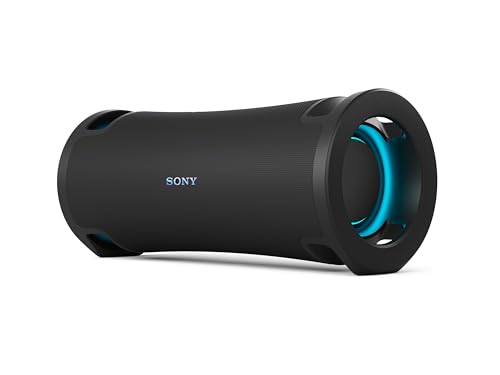Beyond algorithm-approved headlines lies a world of knowledge most media outlets won’t touch—not because it’s controversial, but because it doesn’t generate enough outrage clicks. These oddities reveal how institutions actually function when nobody’s performing for the cameras. Verified regulations expose cultural priorities, animal adaptations reveal environmental realities, and corporate symbols hide origin stories that challenge their public narratives. What follows are verified facts and clarifications on commonly misreported trivia.
Disclaimer: Some images used for commentary and educational purposes under fair use. All rights remain with their respective owners.
6. Mosquito Vision

Evolutionary engineering at its finest, the tiny vampire targeting your bare ankles uses multiple sensory systems to find you. According to entomologists at Caltech, mosquitoes can detect carbon dioxide emissions at distances that vary by species and environmental conditions, with some studies suggesting ranges between 10-50 feet rather than the commonly cited 75 feet. Their compound eyes function primarily as motion detectors with contrast sensitivity, making dark clothing stand out against lighter backgrounds. Female mosquitoes require blood specifically for egg production, explaining their persistent pursuit. Their multi-sensory hunting approach combines visual, olfactory, and thermal detection systems that evolved over millions of years, making them remarkably efficient at locating hosts despite their tiny brains.
5. Horse Vision

Literally seeing a different reality, horses process visual information in ways dramatically different from humans. Well-documented research from veterinary ophthalmologists confirms horses possess nearly 360-degree panoramic vision with significant blind spots directly in front and behind them. When a trainer suddenly appears in these blind zones, the horse may startle dramatically. Equine vision studies verify they have dichromatic sight, seeing primarily blues and yellows while lacking receptors for the red spectrum, creating a limited color palette. Their depth perception, particularly for stationary objects, is demonstrably poorer than human binocular vision, affecting how they navigate obstacles and explaining many of their seemingly irrational reactions to environmental changes.
4. Singapore’s Chewing Gum Law

Singapore’s well-documented 1992 ban on chewing gum sales resulted from a verifiable cost analysis. Official records confirm vandals disabled mass transit doors with gum, causing delays and expensive repairs to the Mass Rapid Transit system. The government enacted legislation imposing $1,000 fines for gum sales, a figure verified through Singapore’s regulatory records. Later amendments allowed therapeutic gum with medical prescriptions, demonstrating the pragmatic rather than purely ideological nature of the law. The ban remains one of Singapore’s most discussed regulations and continues to be enforced, making it a verified example of how public policy can prioritize infrastructure maintenance over certain consumer preferences while achieving its stated goals of reducing vandalism and maintenance costs.
3. Canada’s Pet Rat Law

Alberta’s prohibition on pet rats stands as a verifiable example of regulatory variation within a federal system. According to official Alberta Agriculture documentation, the province maintains one of North America’s only rat-free statuses through strict enforcement of the Agricultural Pests Act, which explicitly prohibits rats as verified by provincial government sources. This regulation stems from Alberta’s grain-based economy and the documented economic damage caused by rodent infestations. Other Canadian provinces permit domesticated rats as pets with varying restrictions, creating a documentable patchwork of regulations across provincial borders. Rat enthusiasts in permitted provinces legally keep these animals as companions, while Alberta’s enforcement records show ongoing efforts to maintain their rat-free status through prevention and response programs that have operated continuously since the 1950s.
2. Penguin Size

Emperor penguins, according to the peer-reviewed measurements from Antarctic research programs, stand approximately 4 feet (1.2 meters) tall and typically weigh between 50-88 pounds (22-40 kg)—substantially less than the commonly misreported 150 pounds. Published research from the British Antarctic Survey confirms these birds can dive to depths approaching 1,750 feet while achieving swimming speeds of up to 8-9 mph. Their physiology is specifically adapted to the Antarctic environment, with multiple verified anatomical features that support heat retention and efficient swimming. Climate researchers have documented how these specialized adaptations, while perfect for stable cold conditions, make these birds particularly vulnerable to environmental changes affecting ice formation and prey availability—a concern verified by multiple climate monitoring programs tracking Antarctic ecosystem shifts.
1. Firefox Logo

Mozilla’s corporate records confirm the Firefox logo features a red panda—not a fox—encircling a stylized globe. The company’s own historical documentation verifies the name originated from the Chinese term for red panda, which translates to “firefox” in English. This branding choice, documented in Mozilla’s development archives, deliberately selected an animal unfamiliar to many Western users to create a distinctive market identity. Independent marketing analytics verify the logo achieved recognition rates exceeding 70% among internet users during Firefox’s peak popularity. The browser’s visual identity has evolved through several documented redesigns while maintaining the circular red creature motif, demonstrating how successful branding can maintain core identity elements while adapting to changing design trends—a case study frequently cited in marketing literature.





























